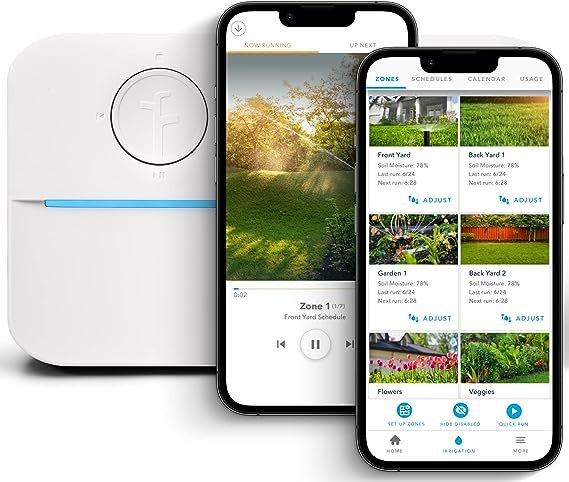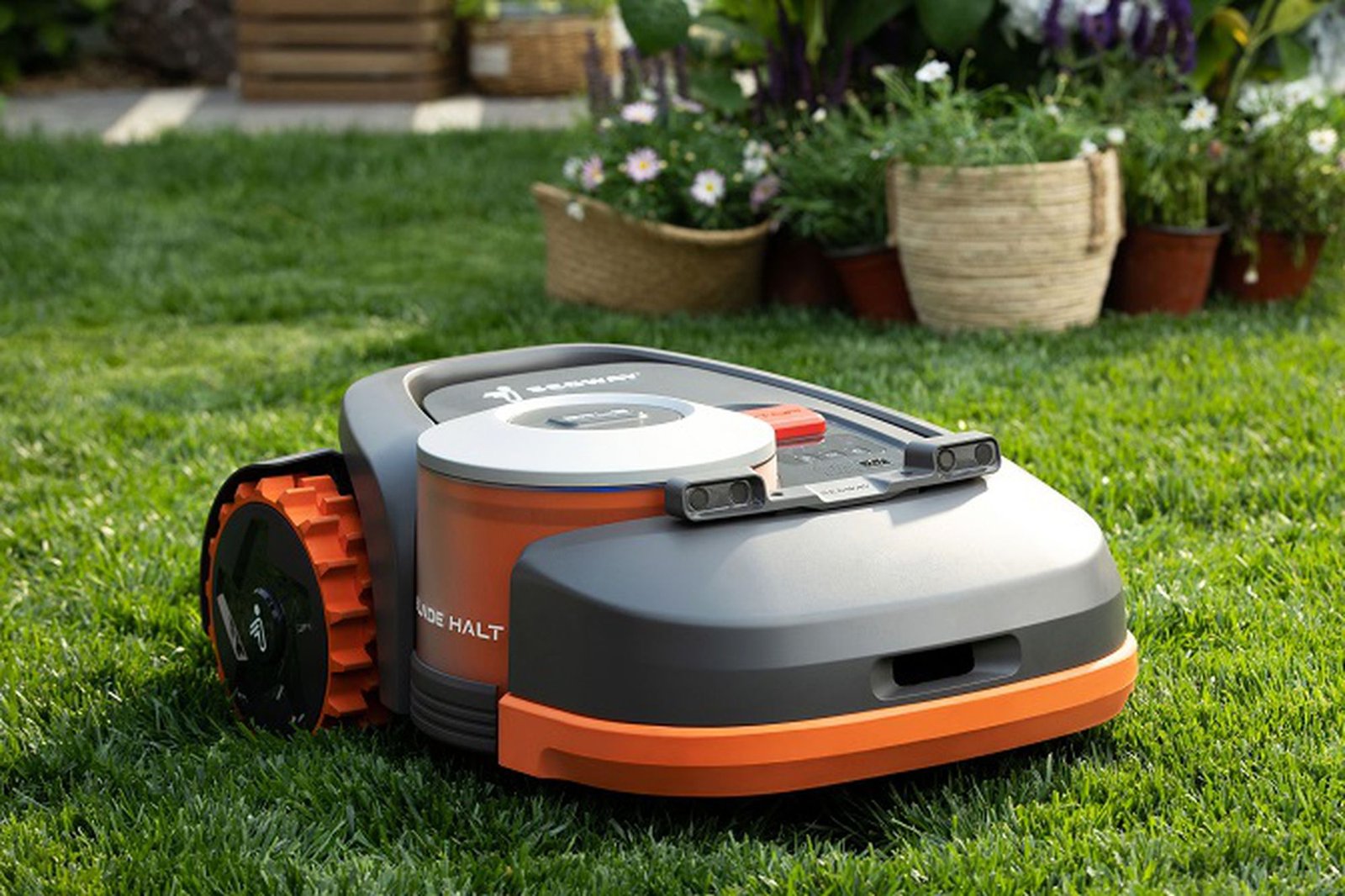Few things have been left untouched by the artificial intelligence revolution that’s swept the globe in recent years. Small businesses, global trade, communication, and software have all been influenced by huge leaps in machine learning and AI-enabled processes.
But surely AI can’t have an influence on something as home-based and as hands-on as lawn care? Think again – not only are there already ways in which AI can be used to help you get the healthiest, classiest looking lawn in the neighborhood, but technology is improving with every passing week.
The robots, software, and AI-enabled systems of the future really aren’t that far away. Wherever you look, the possibilities of how AI can help hobby gardeners and home-owners keep their backyard looking luscious and trim are expanding in new and exciting directions.
Today, we’ll be taking a look at five ways that AI-enabled processes, software, and machines can help you grow and maintain the lawn you’ve always wanted. Whether you’re a weekend mower, a mid-scale rancher, or a small business owner looking to streamline and aid your company’s workload, we have some exciting, AI-enabled ideas for you to consider.
1. Robotic mowers
Automated mowing machines that you can leave to trim the lawn whilst you put your feet up and relax are nothing new. In fact, the first prototypes started emerging on the market over two decades ago. Only in recent years are we seeing a boom in commercial sales, as models become increasingly affordable, safe and effective.
What is new and exciting is some of the latest AI-enabled software that powers these machines. Companies such as Husqvarna are already producing models which use machine learning along with video and motion sensors to help identify unusual, unfamiliar objects such as toys, pets, or children.
Such models also rely on sensors and AI to map out a mowing route, sensing where the grass ends and other surfaces or terrain begins. This means they do not require perimeter wire to be set up beforehand, meaning they can be set to work on different lawns and spaces in a matter of minutes. Some AI-enabled mowers can also sense dry or yellow spots in the grass, adding liquid fertilizer as required.
What’s even more exciting is the prospect of automated mowers feeding back detailed biodiversity data to their owners based on the flora and fauna they encounter on their daily rounds. AI-software can help these machines identify, label, and interpret complex visual data such as passing butterflies, different grass species, and flowering plants, delivering live status reports to the gardener about what’s thriving in their backyard.
Much of this software is still in its developmental stage, but we should hopefully be seeing market-ready models emerging in the next few years. AI has already turned basic mowing robots that patrol a human-installed perimeter into more advanced, responsive machines that adapt and alter their behavior based on what they perceive around them, and that’s just the beginning of what could be possible in the decades ahead.
2. Turf diagnostics
Artificial intelligence is driven by data – whether that be numbers, audio signal, video feed, or still images, the more data you can provide AI-software, the better it becomes at analyzing and parsing information in ways that are helpful to humans.
How might this apply to lawn care? Well, AI-enabled software is already available, and continues to be developed, to help large land-owners, farmers, and commercial enterprises maximize their growing potential. Golf course architects, crop planters, irrigation specialists, and turf technicians are increasingly turning to AI to help them recognize and assess different soil conditions, weather data, and seasonal changes, as well as to produce recommendations as to which interventions or species of plant might be best suited to certain conditions.
Smaller homeowners might still find the systems and investment required to harness this new technology prohibitive and, frankly, unnecessary for smaller patches of ground. However, ranch owners or small businesses might consider AI-software that can help them assess and analyze larger areas of land, particularly if you are in possession of numerous plots that you want monitored simultaneously.
Some gardeners and turf lovers are starting to combine AI-software with live drone footage and other monitoring tools to help them hone in on problem spots that the computer learns to recognize over time, such as dry patches, diseased areas, or even flooded land. With AI-enabled turf diagnostics, time can be saved on surveying the entirety of a large property, with the software helping you zone in more effectively and potentially even recommend a course of action, depending on other factors such as weather patterns and soil profiles.
3. Maintenance scheduling and irrigation

Traditional irrigation systems have historically relied on manually set timers or human initiation. AI-enabled systems can respond to weather and soil conditions in real-time, helping to avoid over or underwatering without the need for constant human adjustment and monitoring.
Larger commercial organizations are already harnessing the power of AI to make sure that water is applied when and where it’s needed, rather than according to a rigid schedule. The technology that allows this to take place in smaller backyards is becoming increasingly affordable. All you need is irrigation apparatus that links to sensors installed in the ground, along with software that combines this real-time data with other publicly available information, such as local weather patterns, storm movements, and seasonal shifts.
4. Design tools
Gone are the days when you need to hire an expensive team of surveyors, designers, landscape architects, or technicians to assess and draw up ideas for your lawn area. For those looking to breathe a bit of life into their backyard with a fresh landscape design, or hobby gardeners wanting to take the first steps in dreaming up a new vision for their outdoor space, there are a number of AI-powered apps that can help you do just that.
Some of the most popular landscape design aids on the market include ‘augmented reality’ applications. With these, you position your device’s camera to take in the area that you’d like redesigned and the software superimposes different design ideas onto the live image.
This is a great and inexpensive way to dream up and knock about ideas and drafts for a newly imagined garden plot. Depending on the app, you can specify what sort of structures, patterns, or styles you want to see play out in front you, then watch the screen as your lawn space transforms before your very eyes.
This is a great use of AI to consider if your lawn care plans for the coming year might involve a reshaping of your grassy areas or a refashioning of the whole backyard. It’s also a great way for those without a lawn, but who might be interested in growing and maintaining one, to see what such a space could look like in the area you’ve envisioned for it. Before you splash out on having a professional landscape architect draw up paper plans, why not use some affordable, accessible AI-software to get some basic ideas out in the open.
5. Answering lawn care questions
One of the best uses people are finding for chatbots such as ChatGPT, Perplexity AI, and Jasper, is answering questions on practically any topic under the sun. Lawn care is no exception.
You might want to know which species of grass is likely to grow best in rural Alabama, or why your Kentucky Blue is looking a little patchy right now even though you’re watering it regularly, or what are the pros and cons of certain fertilizer products, or how to fix a faulty lawn strimmer, or where the nearest garden center is and what its customer reviews are like.
Whatever your question, the most advanced AI-enabled chatbots are able to respond in tailor-made fashion to your query, drawing on a wealth of information and data to help them craft informative answers. You can also refine your question to help you get to the answer that’s most helpful, or have the AI bot expand upon certain pieces of information.
Can an AI bot replace the expertise of a human lawn technician? Probably not, but if you don’t have a professional lawn technician sitting next to you, jumping online and using AI to deal with your query might be the next best thing. It can certainly prove to be one of the fastest ways of finding out what you need to know, helping you filter through whole swathes of online information, conflicting advice, and confusing guidance in a matter of seconds.

